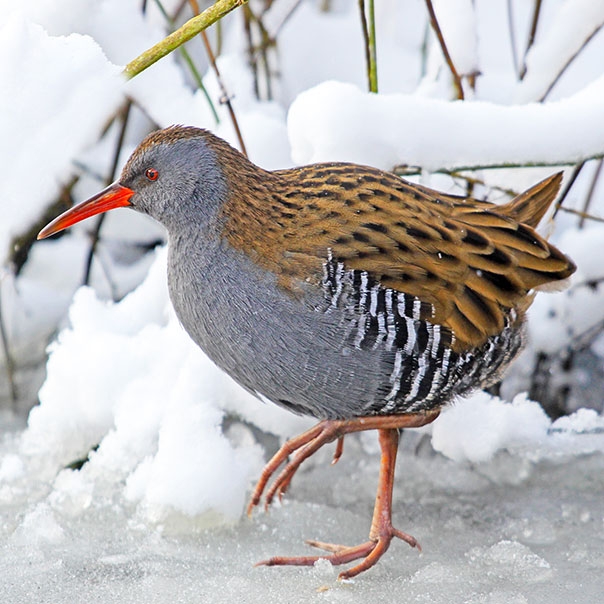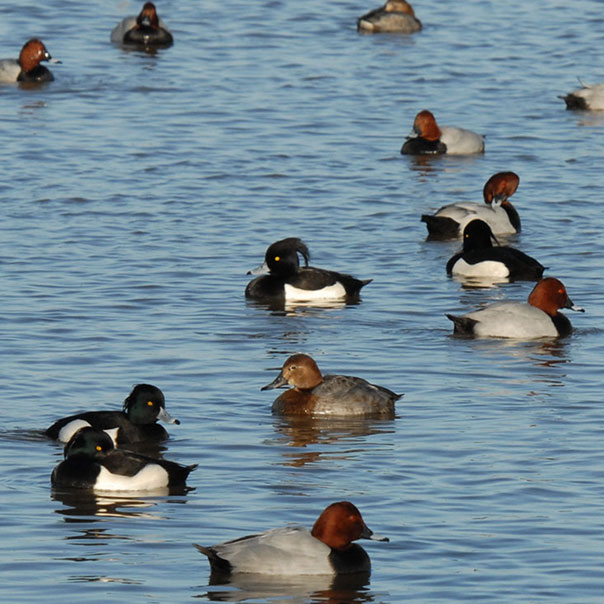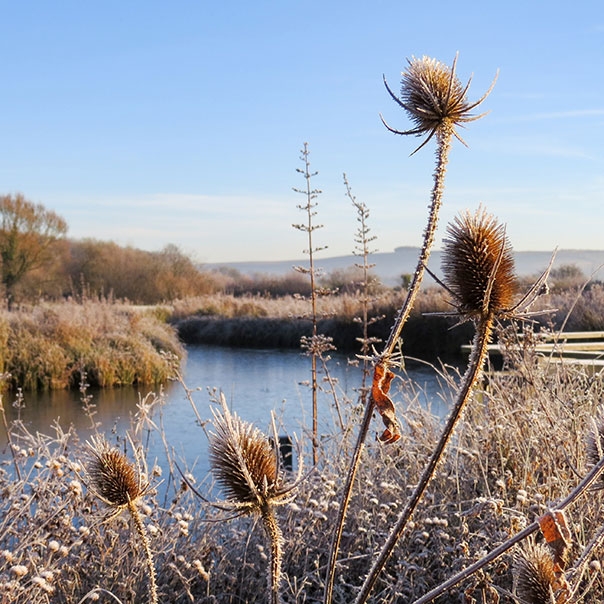Wetland wildlife in January
The days are short and the nights long and cold, but rest assured your mood will be lifted with a wetland visit and a chance to wonder at the spectacles of our winter wildlife.
It’s a wonderful time to take advantage of the short daylight hours and the wildlife is doing the same thing, feeding as much as they can to put on weight and stay warm. So there’s a good chance they’ll be out and about when you are.
Wetlands at their best
This month, the water, sky and everything in between will be full of wintering bird life. This is what the ducks, geese, swans and waders that we welcomed in autumn came for; using their time wisely to feed up and put on weight in preparation for spring migration. Lakes and meadows filled with feeding and resting birds can be great to scan through with your binoculars. Many, such as lapwing and golden plover, will routinely take flight in a cloud of thousands; a truly breath-taking scene. Although cold-weather influenced movements of birds can continue until February, if the weather does begin to get milder towards the end of this month, these wintering birds will start to think about heading north. So get out and see them while you can.
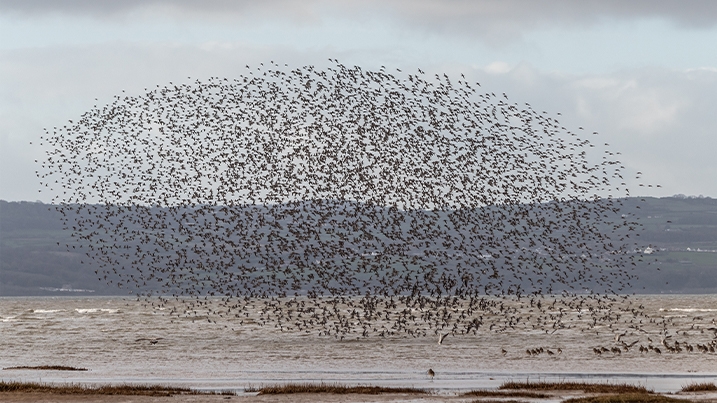
Take note of the everyday
As well as our winter spectacles, take some time to look at wildlife you might all-too-often overlook. More common birds such as mallards will be looking brilliant in the low winter sun, the drakes’ iridescent green heads catching the light in a shade you’ll have a hard time finding elsewhere. They’ll now be starting to display to the females, bobbing their heads up and down; it’s not so far off that they will be thinking about pairing up and breeding. The females, although thought of as drab, like the drakes will reveal their colourful wing speculum when the wing angle is right, often when preening or in flight; a flash of colour that can range from light blue to deep purple depending on how the light catches it.
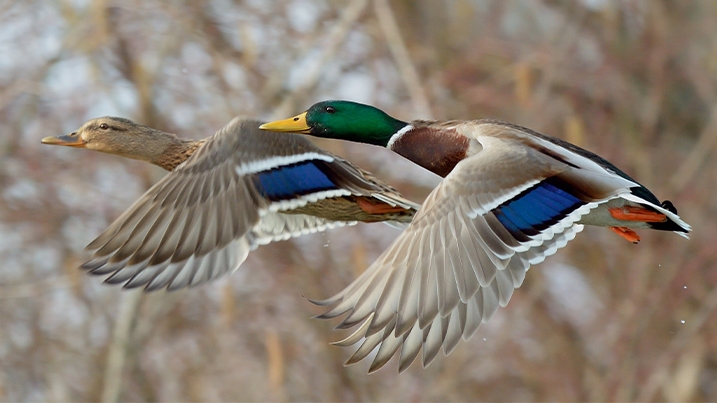
It’s also a great time to simply immerse yourself in the winter wetland landscape and witness the icy colours, frosted vegetation and glowing sunsets. You’ll likely be covering up from the cold with thick layers of clothing, but have you ever wondered how birds have the ability to stand in cold water or even on ice without getting frostbite? The secret lies in an adaptation that helps them manage the difference in temperature between their feet and the outside cold. Many waterbirds have a thermoregulatory exchange in their feet, where warm arterial blood and cold blood pass by closely together as it’s pumped around, reducing the temperature of their feet but also keeping them mobile. Because the birds’ feet and the ice are closer in temperature, the risk of frostbite is reduced.
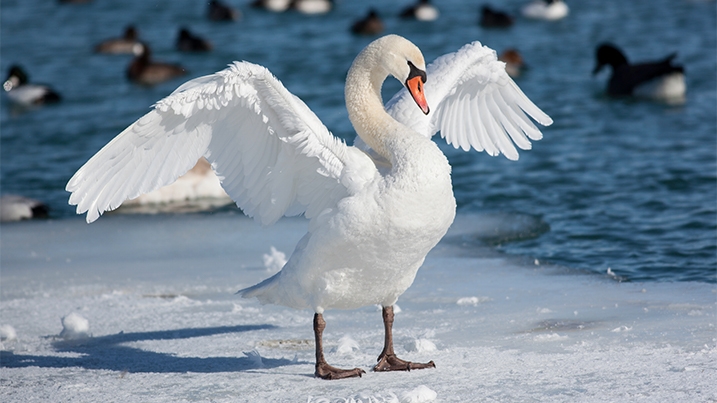
Short days mean a greater chance of connecting with wildlife
The short daylight hours, lack of leaf cover and low temperatures result in there being a higher chance than in the summer months of you connecting with wildlife. They’ll be out and about at the same time as you, feeding up in order to stay warm. These are great conditions in which to spot a kingfisher, whether the jolting flash of blue zipping across the water, or if you’re really lucky, perched up high looking for fish, ready to dive into the water and eat. You might also see finches and tits atop of reed beds, relying on dried seed heads for food. Plants like great reedmace and teasel are very important sources of calories at this cold time.
Look out for those scarcer wintering duck species that stay at our wetlands in winter along with the commoner species. You’ve got a chance of spotting scaup, goldeneye and smew.
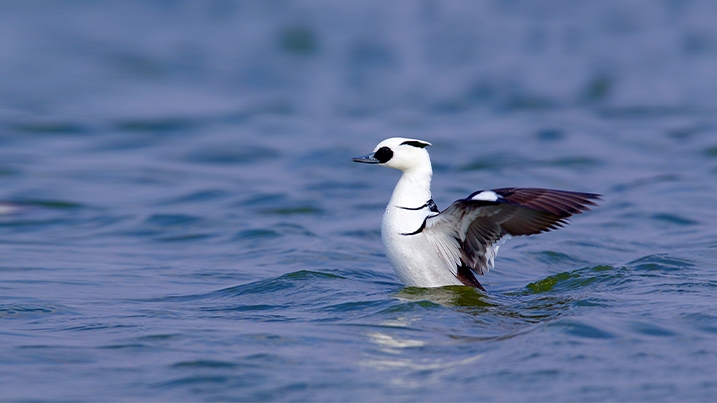
Down at the reedbed
If you’ve not yet had the chance to check out your nearby reedbeds, then take some time this month to look for the elusive wildlife they hold. Wintering bitterns are happy to spend time in close quarters with one another in smaller reedbed systems, spending the colder months in reedbeds like those at WWT London. You’ll need to carefully scan with your binoculars though; they often adopt a camouflage posture with bill pointing straight up in the air, magically blending in to their habitat. In spring and early summer, male bitterns need at least 0.2 sq km of reedbed each for breeding territory, so you’re only likely to spot them then at the more extensive reedbed sites.
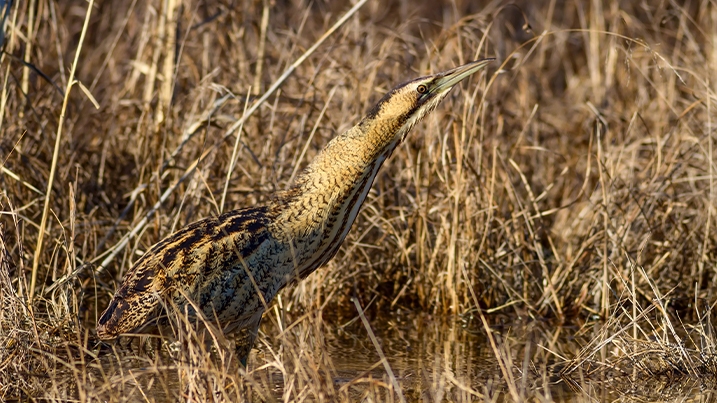
Active in winter
At this time of year, you might be surprised to find out that some birds are already starting to think about nesting. It might well be worth keeping an eye out for common cranes, especially if you’re lucky enough to be near to their haunts at WWT Welney and WWT Slimbridge. They will be easy to see, but also likely starting to prospect for nesting sites for the coming breeding season.
Indeed, Egyptian geese, living wild in the south east of England, are breeding already. Even though they originate from much warmer climates, they haven’t adapted to change their breeding cycles since being introduced to the UK. Therefore, the majority still breed in January, meaning gosling mortality rate is high and restricts the species to the milder south east.
Also enjoying warmer temperatures in the UK are little egret, cattle egret, great white egret, spoonbill and glossy ibis. If you’ve spotted any this winter, it’s a big change from just a few decades ago, when they were just scarce visitors. These species have started to move north from the Mediterranean, encouraged by the warming climate in recent years. They can now be seen regularly on our wetlands throughout the year, wintering and breeding.
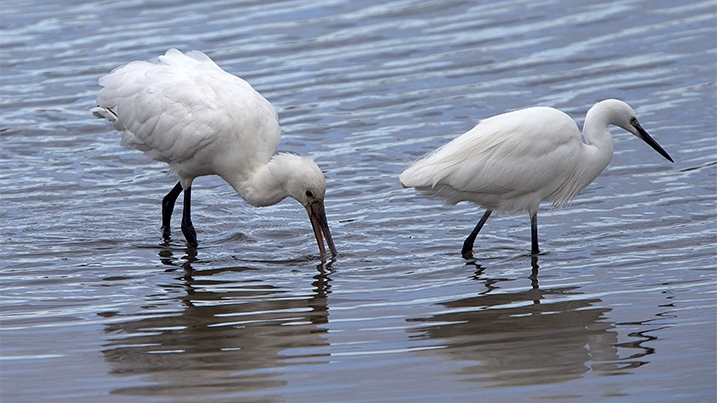
If the winter is a mild one, these long-legged birds will be able to feed well on amphibians stirring from their slumber, themselves coming out of hibernation for feeding periods. If the weather turns cold though, they may disappear again. But if it stays mild, then towards the end of the month, species such as common frogs in the south-west might be heard returning to ponds and croaking frantically; a sound of things to come as spring creeps ever closer.
Where to see January wildlife
Wintering bittern can be seen throughout much of lowland England, Wales and Scotland, as can great white egret.
Wintering little egret can be seen throughout much of lowland England, Wales, Scotland and Northern Ireland. Cattle egret are more restricted to southern areas, as are glossy ibis.
Winter duck species are more likely to be seen in eastern areas, but could turn up anywhere, inland or coastal.
February
As temperatures rise and daylight hours lengthen, wintering waterbirds head off to their summer haunts. Displaying ducks, amphibians returning to ponds and the very first flowering signs of spring.
Wetland wildlife in FebruarySupport from players of People's Postcode Lottery helps us care for our reserves and protect amazing wetland wildlife.

